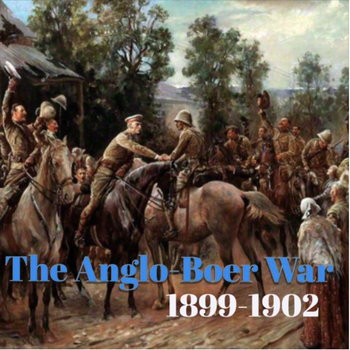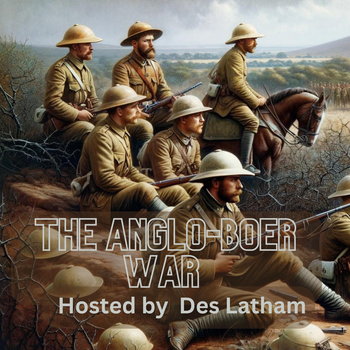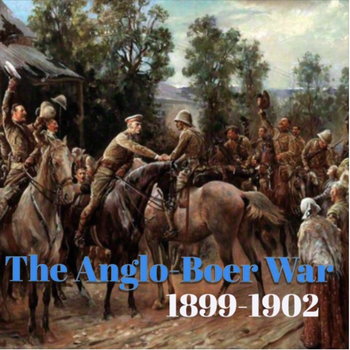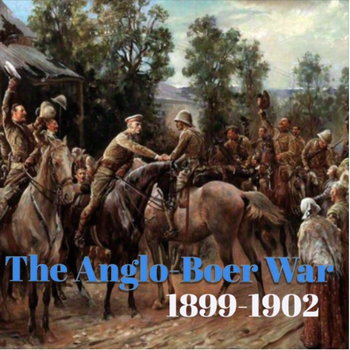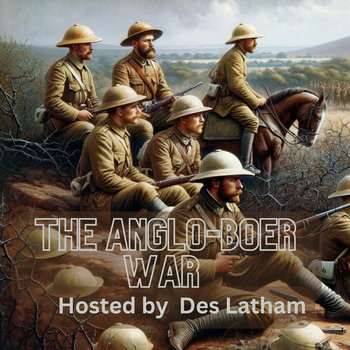
Episode 91 - Women are caught in an artillery barrage and a deadly blizzard sweeps across the veld
Loading player...
It’s mid June 1901. Winter in the Southern Hemisphere and in the Highveld or high plains of South Africa that means bitterly cold nights where the temperature can dip well below freezing. As I write, this, the temperature outside has dipped to 4 degrees centigrade in Johannesburg - or 39 degrees farenheit. Yes, its nothing like Siberia or Canada, but this is Africa and these kinds of temperatures catch the uniformed off-guard.
It gets much colder in other parts of South Africa. In the Cape Province, the town of Sutherland is the coldest in the country with mid-winter lows that can drop to below -20 centigrade or -4 farenheit and where 3 feet of snow can fall.
The British Army was not ready for these extremes, as the German army was not ready for the Russian Winter of 1941/2. While South Africa’s high plains winter is nothing like Russia’s, the point is the military underestimated the weather.
The British were conducting what were known as Drives with columns of thousands of troops riding or marching across the veld rounding up small groups of Boers who were trying to continue the guerrilla war.
While nights and early mornings can be bitterly cold, during the day temperatures rise to above 20 degrees Centigrade or 68 Fahrenheit, and it becomes extremely dry. Not quite the Atacama, but dry enough.
Most of South Africa is a summer rainfall region, except for the Western Cape which has a Mediterranean climate, very similar to the San Francisco area of California.
So Winter has come to the Anglo-Boer war and for many British soldiers its their second on the veld. The Boers meanwhile, have slowed their action with the lack of water for their horses and feed that has disappeared from the veld.
General de la Rey for example has sent most of his men home and told them to wait out the winter for a renewal of guerrilla warfare in Spring. De la Rey heads off to join General Christiaan de Wet who is still fighting along with die hard followers of around one hundred burghers who had made it their mission to cause as much trouble as possible for the British in the Orange Free State.
However, between 5th June and 20th June 1901 freezing weather had made their mission painful, and deadly. They were not alone. As I’ll explain, a blizzard that was about to sweep across the high veld would lead to deaths on all sides, not least the civilians cooped up in the Concentration Camps. That’s the contradiction that is South Africa. The dry winters are interspersed with icy cold fronts that are driven across the sub-continent all the way from the Antarctic, bringing frozen moisture that leaves high ground covered in snow.
It gets much colder in other parts of South Africa. In the Cape Province, the town of Sutherland is the coldest in the country with mid-winter lows that can drop to below -20 centigrade or -4 farenheit and where 3 feet of snow can fall.
The British Army was not ready for these extremes, as the German army was not ready for the Russian Winter of 1941/2. While South Africa’s high plains winter is nothing like Russia’s, the point is the military underestimated the weather.
The British were conducting what were known as Drives with columns of thousands of troops riding or marching across the veld rounding up small groups of Boers who were trying to continue the guerrilla war.
While nights and early mornings can be bitterly cold, during the day temperatures rise to above 20 degrees Centigrade or 68 Fahrenheit, and it becomes extremely dry. Not quite the Atacama, but dry enough.
Most of South Africa is a summer rainfall region, except for the Western Cape which has a Mediterranean climate, very similar to the San Francisco area of California.
So Winter has come to the Anglo-Boer war and for many British soldiers its their second on the veld. The Boers meanwhile, have slowed their action with the lack of water for their horses and feed that has disappeared from the veld.
General de la Rey for example has sent most of his men home and told them to wait out the winter for a renewal of guerrilla warfare in Spring. De la Rey heads off to join General Christiaan de Wet who is still fighting along with die hard followers of around one hundred burghers who had made it their mission to cause as much trouble as possible for the British in the Orange Free State.
However, between 5th June and 20th June 1901 freezing weather had made their mission painful, and deadly. They were not alone. As I’ll explain, a blizzard that was about to sweep across the high veld would lead to deaths on all sides, not least the civilians cooped up in the Concentration Camps. That’s the contradiction that is South Africa. The dry winters are interspersed with icy cold fronts that are driven across the sub-continent all the way from the Antarctic, bringing frozen moisture that leaves high ground covered in snow.

